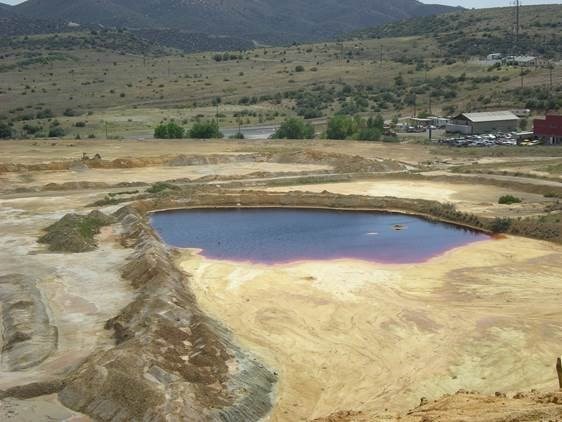SASKATOON – Researchers used synchrotron light to determine that plant waste could be an ideal, cost-effective method for preventing arsenic in mine waste from polluting our water.
The mining industry plays a key role in the North American economy and the wider global market. Precious metals like copper are crucial to several industries, including home construction and vehicle manufacturing. While we rely on precious metals for continued innovation, we also need to find ways to prevent environmental contamination from mining.
A program at the University of Arizona is working to reclaim landscapes that have been impacted by mining waste to create a more sustainable mining industry. Its researchers recently published findings on how reducing environmental impacts through remediation processes that are both efficient and cost effective.
Jon Chorover, a professor and head of the Department of Environmental Science at the University of Arizona, wants to clean up acid mine drainage that contains substantial amounts of heavy metals like arsenic and lead. These top priority pollutants are released when rock materials are exposed to oxygen and rain. The toxic compounds can leak into the ground and contaminate water used for drinking and farming, which can be detrimental to human health.
“We have a strong interest in being able to treat acid mine drainage to remove the arsenic with something that’s relatively low cost,” said Chorover.
Using beamlines at the Canadian Light Source (CLS) at the University of Saskatchewan and the SLAC National Accelerator, Chorover and colleagues analyzed the molecular interactions that occur when biochar is introduced to acid mine drainage.
Created naturally when plant matter is burned, biochar can also be engineered. And it may be the perfect solution for the mining industry if the environmental conditions are just right. It’s also a waste product of the logging industry, made from the woody plant materials that are left behind and it can be used as a remedial tool in the presence of iron.
“Synchrotron based X-ray spectroscopy is essential for being able to get a mechanistic understanding of what we can measure in the lab,” Chorover said. “The only way you can really get a handle on the long-term capacity for the material to retain that arsenic is if you know what bonded structures are formed.”
Iron, another mineral found in mine drainage, interacts with the biochar to form a crystal-like structure. As these crystals grow, they attract the arsenic — similar to a magnet — and form very tight bonds. This allows the arsenic to be safely removed from the environment.
Using the SM beamline at the CLS, Chorover and his team were able to visualize the surface chemistry of the biochar and reveal the fine details of these complex interactions.
“We saw that biochar is not a perfectly homogenous material, but it actually has patchy locations that are highly reactive to the growth of these crystals and as those crystals grow, they sequester the arsenic,” Chorover said.
Chorover believes their research will provide companies and regulators with the information necessary to maintain the environment and reduce impact on communities located near mining operations.




